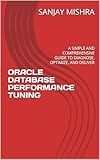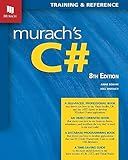Best Database Tools to Buy in December 2025

Database Systems: Design, Implementation, & Management



Identifying Wood: Accurate Results with Simple Tools
- AFFORDABLE PRICES ON QUALITY USED BOOKS, SAVING YOU MONEY!
- THOROUGHLY CHECKED FOR QUALITY, ENSURING A GREAT READING EXPERIENCE.
- ECO-FRIENDLY CHOICE: REDUCE WASTE BY BUYING USED BOOKS!



The Manga Guide to Databases



Database Systems: Design, Implementation, & Management



ORACLE DATABASE PERFORMANCE TUNING: A CHECKLIST APPROACH WITH SIMPLE AND COMPREHENSIVE GUIDE TO DIAGNOSE, OPTIMIZE, AND DELIVER



Murach's C# Programming Book (8th Edition) Comprehensive Guide for Windows Forms Apps & Database Development - Self-Paced Learning for Beginners & Professional Developers



Database Design for Mere Mortals: A Hands-On Guide to Relational Database Design



Concepts of Database Management (MindTap Course List)


In PostgreSQL, you can use the COUNT() function to get the count of a specific column value. You can specify the column name inside the COUNT() function to get the count of non-null values in that column. For example, to get the count of values in a column named "category" in a table named "products", you can use the following SQL query:
SELECT COUNT(category) FROM products;
This will return the total count of non-null values in the "category" column of the "products" table. You can also use the COUNT() function with a WHERE clause to get the count of specific values in a column.
What is the formula to count the occurrences of each unique value in a column in PostgreSQL?
To count the occurrences of each unique value in a column in PostgreSQL, you can use the following query:
SELECT column_name, COUNT(*) FROM table_name GROUP BY column_name;
Replace column_name with the name of the column you want to count the occurrences of, and table_name with the name of the table where the column is located. This query will return a list of unique values in the specified column along with the count of how many times each value appears.
How to get the count of values greater than a certain threshold in a column in PostgreSQL?
You can use the following SQL query to get the count of values greater than a certain threshold in a column in PostgreSQL:
SELECT COUNT(*) FROM your_table WHERE your_column > your_threshold;
Replace your_table with the name of your table, your_column with the name of the column you want to check, and your_threshold with the value you want to use as the threshold. This query will return the count of values in the specified column that are greater than the specified threshold.
What is the method to calculate the frequency of a value in a column in PostgreSQL?
To calculate the frequency of a value in a column in PostgreSQL, you can use the following query:
SELECT value, COUNT(*) AS frequency FROM your_table GROUP BY value ORDER BY frequency DESC;
Replace your_table with the name of your table and value with the name of the column you want to calculate the frequency for. This query will group the values in the column and count how many times each value appears, then it will order the results by frequency in descending order.
